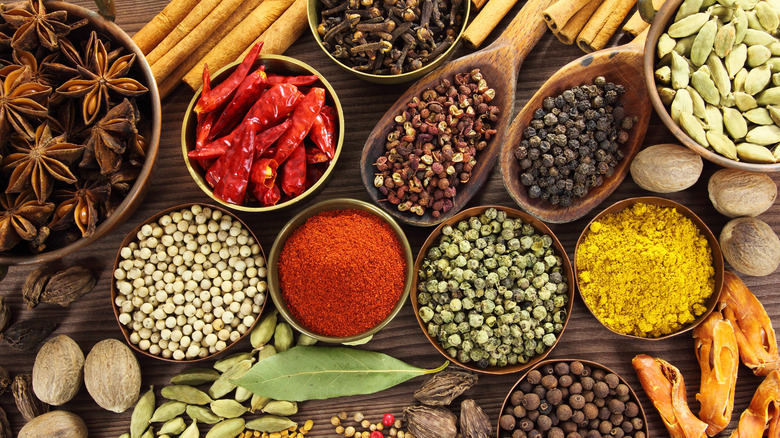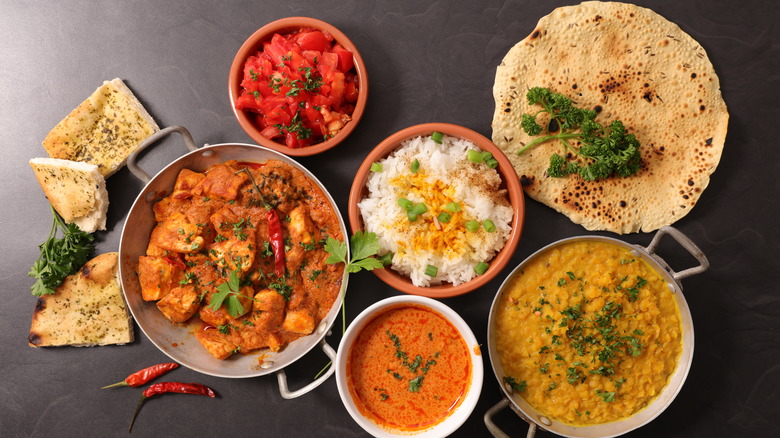Do You Need To Measure Spices When Cooking Indian Food? We Asked An Expert
Learning to cook Indian cuisine opens you and your kitchen up to an entirely new world of flavors and delicious Indian dishes. Some of these dishes can be a bit intimidating at first, but that's where measuring your spices can help you. When asked whether measuring spices was necessary when cooking Indian food, chef Varun Inamdar told Tasting Table that it really depends. "There are two ways to look at this," said Inamdar. "Of course, for newcomers in an Indian kitchen, precise measures are advised for better understanding of herbs, spices, salts, sugars and acids." Inamdar then went on to explain that measuring spices, in turn, encourages better and more accurate learning while helping to preserve traditional recipes.
The other way to look at it, according to chef Inamdar, is for those who are more experienced with Indian cooking who use muscle memory rather than measurements. Inamdar told Tasting Table that this method is "based on years of practice and familiarity with how spices should balance and complement each other." Even so, neither method is better than the other. While there are certain ingredients you're unlikely to find in traditional Indian food, measurements and measuring cups aren't mutually exclusive to authentic Indian cooking.
The best recipes mix measurements and muscles
Rather than thinking of measuring your spices as the beginner level of Indian cooking and not as the master level, chef Varun Inamdar believes that the best approach involves a bit of each. "The choice between muscle memory and precise measurement often depends on individual preference, experience level, and the specific dish being prepared," said Inamdar. "Also, the best practice, in my humble opinion, is a silent blend of both." So what does that look like? Again, it depends.
Certain ingredients are important to measure and adapt, such as the amount of liquid in a curry or the amount of chicken in a biryani. Other ingredients, such as key spices like coriander, cumin, turmeric, or garam masala, are a mixed bag. Garam masala, for instance, tastes different from region to region, while turmeric provides not only flavor, but color. Still, the amount you use can be adjusted to your personal taste. While that might, in turn, raise questions about preserving the authenticity of an Indian dish, it does mean that your heat-sensitive parents can enjoy your homemade vindaloo with a fraction of the chilis, as can you're soapy-cilantro tasting friends when you substitute it for another herb — although some say it's the spice you absolutely cannot skip when cooking Indian cuisine. The best thing you can do is practice a dish first with measurements, then adapting from there by memory, but even Chef Inamdar does a little bit of both.

